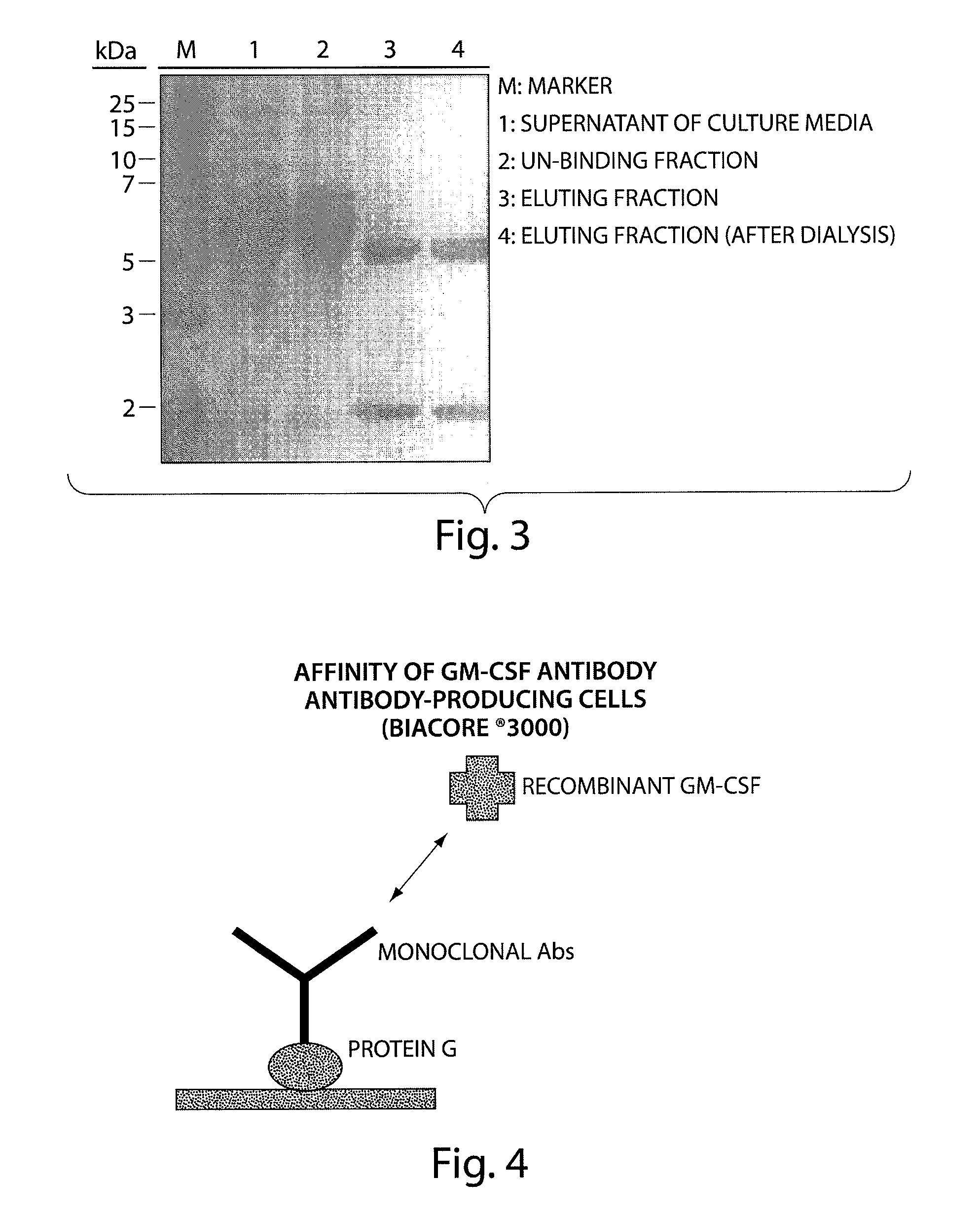Human monoclonal antibody binding to hGM-CSF and its antigen binding portion
a monoclonal antibody and colony stimulating factor technology, applied in the field of monoclonal antibodies and their antigen binding portion binding to human granulocytemacrophage colony stimulating factor, can solve the problems of insufficient affinity and depressing capacity of antibodies blocking hgm-csf, existing anti-hgm-csf antibodies not being able to inhibit a natural hgm-csf biologic activity sufficiently, and achieve high neutralizing capacity, inhibit the proliferation of peripheral blood den
- Summary
- Abstract
- Description
- Claims
- Application Information
AI Technical Summary
Benefits of technology
Problems solved by technology
Method used
Image
Examples
examples
[0133]Hereinafter, examples of the present invention will be described more specifically, but the examples do not limit the scope of the present invention.
[0134]1. Isolation of a hGM-CSF Antibody-producing Cell Clone
[0135]The step until the “isolating an antibody-producing cell” is illustrated in a flow chart shown in FIG. 1. A monocyte was separated from human blood having high level of an anti-hGM-CSF antibody in the blood serum. A T-cell was removed from a monocyte. Then monocyte was infected to EBV, so that the cell was proliferated. The proliferated cells were included in the antibody-producing cell library.
[0136]The antibody-producing cell library is disseminated in 96 well plate. After about 3-4 weeks cultivation, 1st screening was conducted on the anti-hGM-CSF antibody in the supernatant solution. The ELISA method was applied to screen the anti-hGM-CSF antibody in the 96 well plate on which recombinant GM-CSF was coated. The obtained groups of antibody-positive cells were di...
PUM
| Property | Measurement | Unit |
|---|---|---|
| dissociation constant | aaaaa | aaaaa |
| concentration | aaaaa | aaaaa |
| concentration | aaaaa | aaaaa |
Abstract
Description
Claims
Application Information
 Login to View More
Login to View More - R&D
- Intellectual Property
- Life Sciences
- Materials
- Tech Scout
- Unparalleled Data Quality
- Higher Quality Content
- 60% Fewer Hallucinations
Browse by: Latest US Patents, China's latest patents, Technical Efficacy Thesaurus, Application Domain, Technology Topic, Popular Technical Reports.
© 2025 PatSnap. All rights reserved.Legal|Privacy policy|Modern Slavery Act Transparency Statement|Sitemap|About US| Contact US: help@patsnap.com



